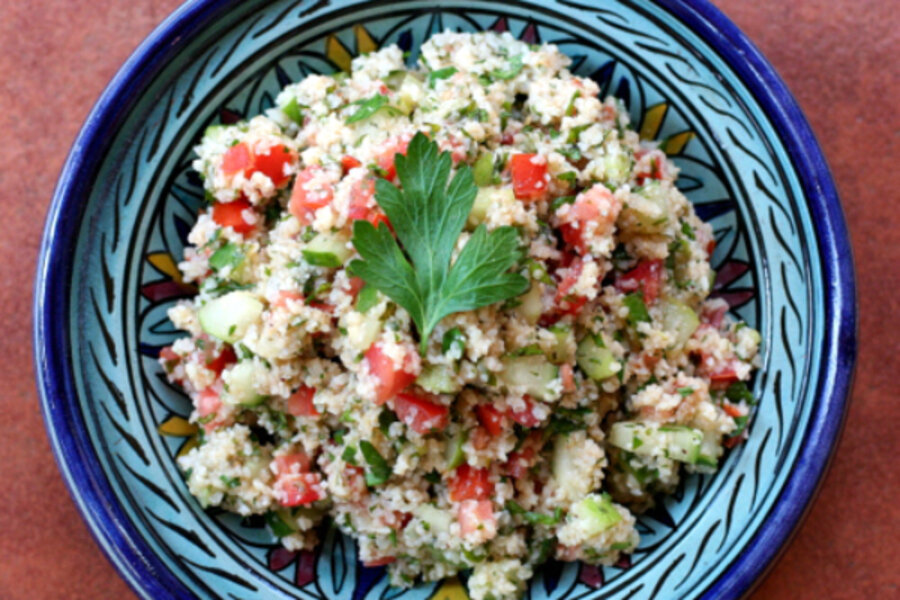Summer market tabbouleh
Loading...
Tabbouleh is the perfect summer farmers market dish – fresh herbs and vegetables tossed with fine grains for a fresh, cool salad. But has always been underwhelming to me. Too bland, too dry, I don’t know. I’ve always wanted to love it, but never had.
Until a conversation at a party about family recipes. A lovely woman from Mississippi was telling me about some of her family’s traditional Lebanese dishes, filtered through generations in the Missisippi Delta. She mentioned in passing that her family always soak the bulgur in lemon juice. That idea stuck with me as a way to pep up the dish. And it does. This version of tabbouleh is bright with lemon juice, really tart and unique. I love lots of fresh herbs, but have added a few spices for a little flair. So now I like tabbouleh – my way. I make this for parties and cook outs, but also just to keep a bowl in the fridge for quick lunches and snacks.
But here’s the thing about tabbouleh. This is my blueprint, lifted from someone else’s recipe. You can do what you want. More tomatoes or cucumbers, no garlic, a little chopped hot pepper. What you find at your market or in the garden. I do offer some hints. I like to give my knife and board a workout and finely chop all the ingredients, so each bite has a good mix of flavors, rather than a big chunk of tomato or cucumber or a big parsley leaf. With all the lemony tang, I’ve never really thought this needed salt, but do as you will.
Summer Market Tabbouleh
Serves 4 as a side dish, easily doubles
1/2 cup fine bulgur wheat
1/4 cup lemon juice
2 plum tomatoes
1 cucumber, seed scooped out
1 green onions, white and light green parts
1 small garlic clove
1/2 cup fresh flat leaf parsley leaves
1/2 cup fresh mint leaves
1 teaspoon fresh thyme leaves
2 tablespoons olive oil
1/4 teaspoon sumac
1/8 teaspoon cinnamon
1/8 teaspoon coriander
1. Place the bulgur in a bowl. Then mix the lemon juice and 3/4 cup water in a pan and bring to a boil. Pour the liquid over the bulgur and give it a good stir. Cover the bowl with plastic wrap and set aside for 15 minutes.
2. While the bulgur is soaking, finely chop the tomato, cucumber, green onions and place in a large bowl. Pass the garlic clove through a press into the bowl, or chop it to a fine paste on a board and add it. Finely chop the herbs and add to the bowl. Add the olive oil, sumac, cinnamon and coriander to the bowl and stir well to blend everything. Set aside.
3. When the 15 minutes have passed, uncover the bulgur and fluff with a fork. If there is any liquid in the bowl or the bulgur seems wet, place it on a fine sieve and press out any liquid. Return to the bowl and fluff with the fork. Leave the bulgur to cool for about 5 minutes.
4. Scrape the bulgur into the tomato cucumber mix and use a fork to mix everything together, breaking up any clumps in the bulgur and scraping the sides and the bottom of the bowl. Cover the bowl again and refrigerate for a few hours to let the flavors meld.







